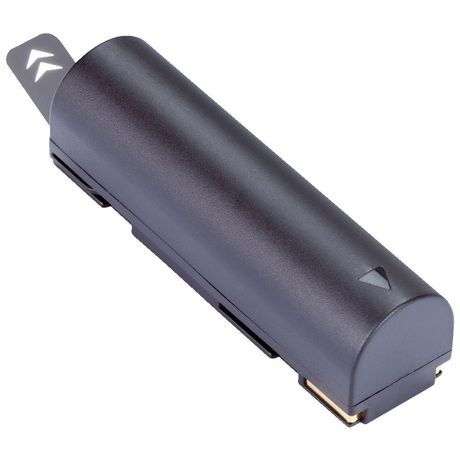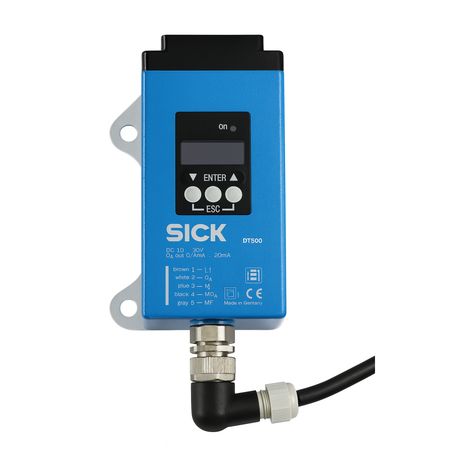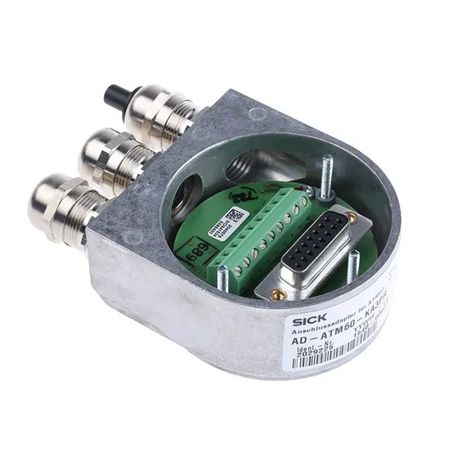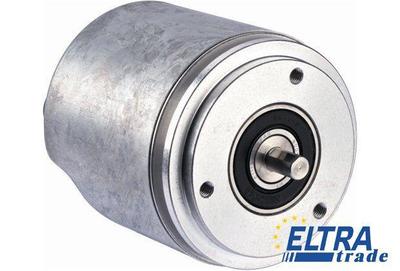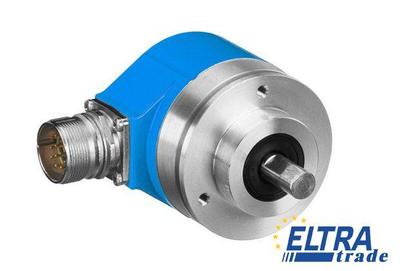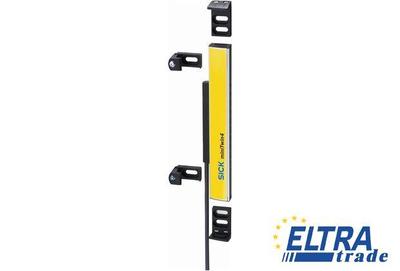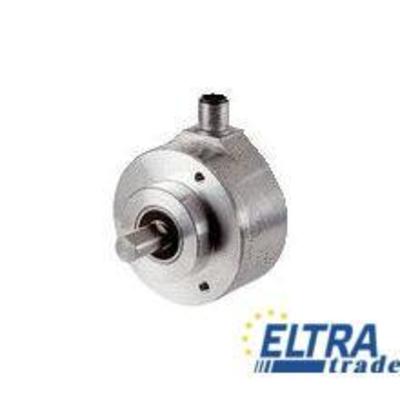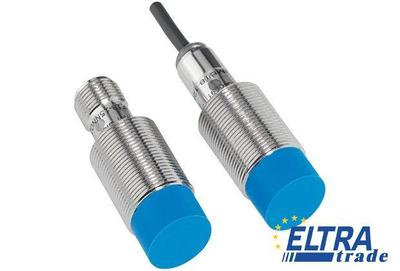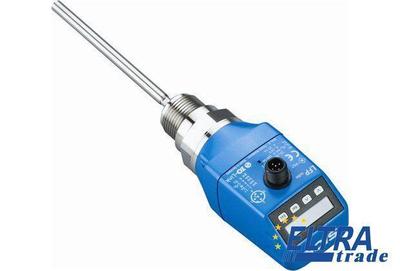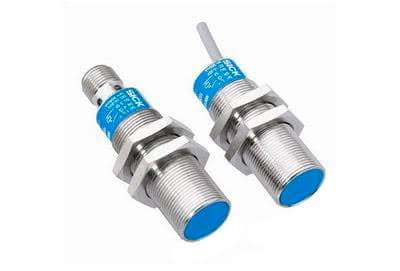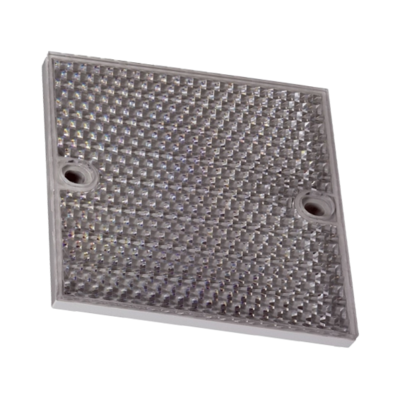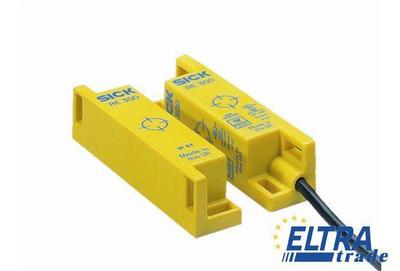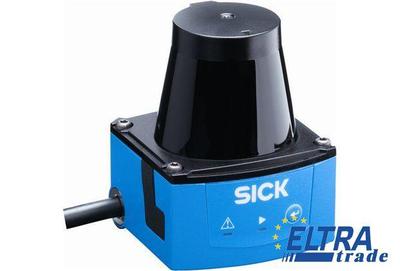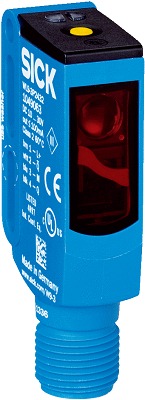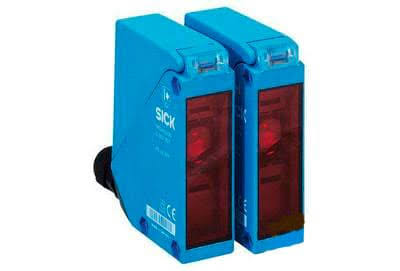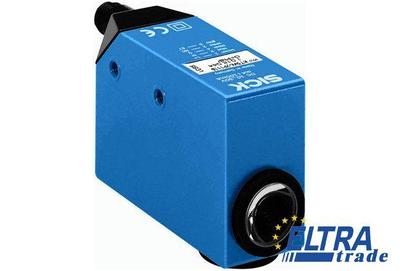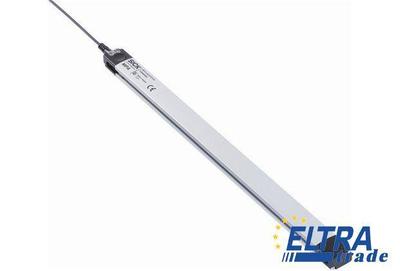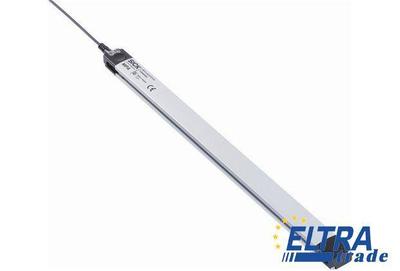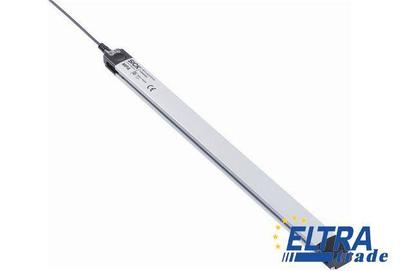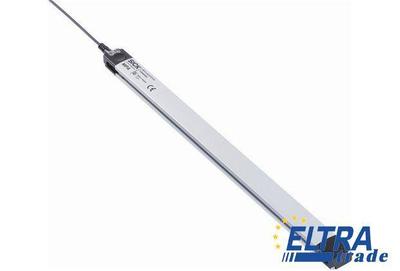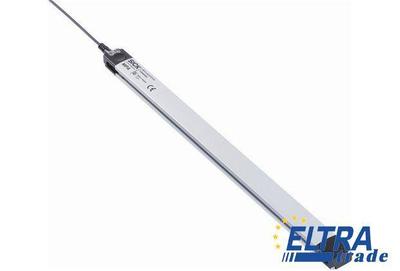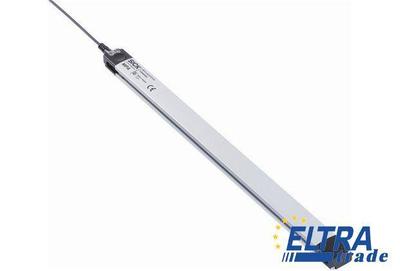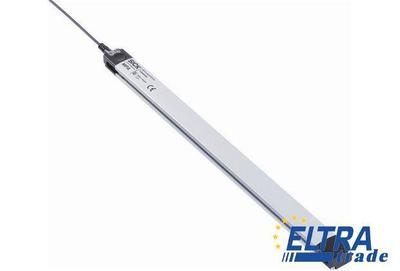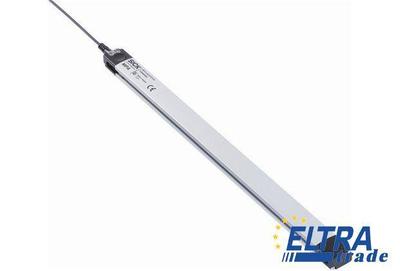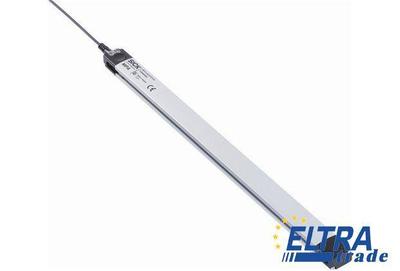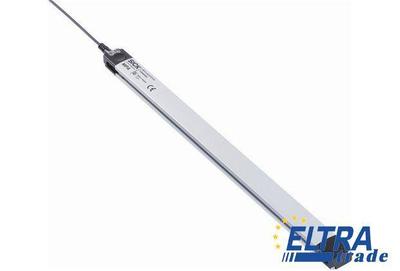Sick
- Distance sensors
- Ultrasonic sensors
- Encoders
- Fluid sensors
- Identification solutions
- Light Grids
- Laser Scanners
- Safety Light Curtains
- Photoelectric sensors
- Proximity sensors
- Registration sensors
- Safety switches
- Safety controllers and relays
- Vision 3D - 2D
- Magnetic Cylinder Sensors
- Other SICK Products
- Accessories and adapters
IN STOCK!!!
- art. 1041422
- Series W12-3
- Sensing range: 20 mm ... 600 mm
IN STOCK!
Replacement battery for IDM140-2BT
IN STOCK!
- Used
- art.: 1026515 / Dx500
- meas. range: 0.2 m ... 30 m
- Target: natural objects
IN STOCK!!!
LFP Cubic / TDR level meters
1062247
- Absolute singleturn encoder
- Resolution: up to 15 bits (32,768 increments)
- Electrical interface: SSI with gray code type or gray capped
- Type 4 (IEC 61496), SIL3 (IEC 61508), PL e (EN ISO 13849)
- Compact cross section (15 mm x 32 mm) with no dead zones
- Cascadable twin stick design - sender and receiver in a single housing
- Compact installation depth
- High resolution up to 16 bits
- Optionally programmable: Output voltage
- zero pulse position
- zero pulse width and number of pulses
IN STOCK!!!
Inductive proximity sensors
- Size: M18
- Enclosure rating: IP67
- Operating temperature: -25...+75° C
IN STOCK!!!
Magnetic field sensor
- Operating temperature: -25 °C ... 75 °C
- Switching frequency: 5,000 Hz
- Supply voltage: 10 V DC ... 30 V DC
- Output signal: analog
- 4 - 20 mA current and 0 -10 V (in one sensor)
- Superior precision: 0.05 mm resolution
- 0.1 mm repeatability
- 0.3 mm linearity
- 1 ms measurement rate
sick pl80a reflector
- art. 1003865
- Reflector material: stainless steel
- Reflector diameter: 80 mm
- Optics material: polycarbonate
- Optical dispersion angle: 20°
- Contactless blocking devices RE300 . 1 NO/1 NC contact
- Response range of up to 5 mm
- Up to performance level PL e / Cat. 4 (EN ISO 13849)
Configure without a PC using "touch and teach"
Small, lightweight and economical measurement sensor
Field evaluation using intelligent algorithms
IN STOCK!!!
Photoelectric sensors in a standard housing
IN STOCK!!!
Photoelectric Sensors
- Weight: 0.174 Kg
- Volume: 728.0 cm³
- Dimensions: 8.000 * 7.000 * 13.000
Contrast sensor
- Switching frequency: 10 kHz
- Ambient temperature: -10 ... 55 °C
- Dimensions: 80 mm x 30.4 mm x 53 mm
- Analog positioning sensor that can be mounted with adapters on various cylinders thanks to its universal housing, e.g., cylinders with T-slot, round and tie rod cylinders
- Measuring lengths from 107 mm to 1,007 mm in 36 mm steps
- Output signals 4 mA to 20 mA as well as 0 V to 10 V in a single sensor
- Analog positioning sensor that can be mounted with adapters on various cylinders thanks to its universal housing, e.g., cylinders with T-slot, round and tie rod cylinders
- Measuring lengths from 107 mm to 1,007 mm in 36 mm steps
- Output signals 4 mA to 20 mA as well as 0 V to 10 V in a single sensor
- Analog positioning sensor that can be mounted with adapters on various cylinders thanks to its universal housing, e.g., cylinders with T-slot, round and tie rod cylinders
- Measuring lengths from 107 mm to 1,007 mm in 36 mm steps
- Output signals 4 mA to 20 mA as well as 0 V to 10 V in a single sensor
- Analog positioning sensor that can be mounted with adapters on various cylinders thanks to its universal housing, e.g., cylinders with T-slot, round and tie rod cylinders
- Measuring lengths from 107 mm to 1,007 mm in 36 mm steps
- Output signals 4 mA to 20 mA as well as 0 V to 10 V in a single sensor
- Analog positioning sensor that can be mounted with adapters on various cylinders thanks to its universal housing, e.g., cylinders with T-slot, round and tie rod cylinders
- Measuring lengths from 107 mm to 1,007 mm in 36 mm steps
- Output signals 4 mA to 20 mA as well as 0 V to 10 V in a single sensor
- Analog positioning sensor that can be mounted with adapters on various cylinders thanks to its universal housing, e.g., cylinders with T-slot, round and tie rod cylinders
- Measuring lengths from 107 mm to 1,007 mm in 36 mm steps
- Output signals 4 mA to 20 mA as well as 0 V to 10 V in a single sensor
- Analog positioning sensor that can be mounted with adapters on various cylinders thanks to its universal housing, e.g., cylinders with T-slot, round and tie rod cylinders
- Measuring lengths from 107 mm to 1,007 mm in 36 mm steps
- Output signals 4 mA to 20 mA as well as 0 V to 10 V in a single sensor
- Analog positioning sensor that can be mounted with adapters on various cylinders thanks to its universal housing, e.g., cylinders with T-slot, round and tie rod cylinders
- Measuring lengths from 107 mm to 1,007 mm in 36 mm steps
- Output signals 4 mA to 20 mA as well as 0 V to 10 V in a single sensor
- Analog positioning sensor that can be mounted with adapters on various cylinders thanks to its universal housing, e.g., cylinders with T-slot, round and tie rod cylinders
- Measuring lengths from 107 mm to 1,007 mm in 36 mm steps
- Output signals 4 mA to 20 mA as well as 0 V to 10 V in a single sensor
- Analog positioning sensor that can be mounted with adapters on various cylinders thanks to its universal housing, e.g., cylinders with T-slot, round and tie rod cylinders
- Measuring lengths from 107 mm to 1,007 mm in 36 mm steps
- Output signals 4 mA to 20 mA as well as 0 V to 10 V in a single sensor
- Analog positioning sensor that can be mounted with adapters on various cylinders thanks to its universal housing, e.g., cylinders with T-slot, round and tie rod cylinders
- Measuring lengths from 107 mm to 1,007 mm in 36 mm steps
- Output signals 4 mA to 20 mA as well as 0 V to 10 V in a single sensor
- Analog positioning sensor that can be mounted with adapters on various cylinders thanks to its universal housing, e.g., cylinders with T-slot, round and tie rod cylinders
- Measuring lengths from 107 mm to 1,007 mm in 36 mm steps
- Output signals 4 mA to 20 mA as well as 0 V to 10 V in a single sensor
Sick catalog overview you can find here: Sick overview pdf![]()
In modern industry, one cannot do without precise measuring instruments that serve to record various data. Sensors are an important component in the automation of any technological processes and in the control of various machines and mechanisms.
With the help of Sick industrial sensors, you can get complete information about the parameters of the controlled equipment. Today we will look at what Sick USA sensors are. You can choose such Sick sensors as:
- Distance sensors
- Proximity sensors
- Inductive sensors
- Fluid sensors
- Photoelectric sensors
- Magnetic cylinder sensors
Sick Distance Sensors
The distance sensor determines the distance to the object according to the sonar principle - by sending pulses of ultrasound with a frequency of 40 kHz and receiving its reflection with a delay, the device determines the presence of objects and the distance to them. A similar method is used by bats. The ultrasonic signals generated by the receiver, reflected from the obstacle, return to it after a certain period of time. This time interval becomes a characteristic that helps determine the distance to the object.
The sensor does not respond to sunlight or black objects but may give false readings from fabric or thin objects, including porous materials such as foam rubber.
The sensor is not suitable for determining the distance to sound-absorbing objects. Objects with a flat, smooth surface are optimal for measurement.
Sick Proximity Sensors
Sick proximity sensors have three subspecies, which we will discuss below.
Inductive Proximity Sensors
Inductive proximity sensors are used for the non-contact detection of metal objects. The sensor generates an alternating field, the lines of which come out of the sensitive element and penetrate the sensitive area of the sensor (up to several centimeters). When an electrically or magnetically conductive object appears in this zone, the field is weakened, and the sensor detects this object.
Capacitive proximity sensors
The capacitive proximity sensor is a capacitor with metal concentric plate-electrodes deployed along one plane. If an object enters the electric field near the surface of the electrodes, the capacitance of the capacitor changes, and the sensor detects the object. Capacitive sensors can detect any objects: solid, powdery, and liquid - even through non-metallic walls (juice level in a bottle).
The working distance at which objects are detected is indicated for grounded metal objects. For objects made of other materials, it is necessary to recalculate the working distance according to the catalog curve of the dependence of the distance on the dielectric constant of the material.
Magnetic proximity sensors
Magnetic proximity sensors register an object with a label - a permanent magnet. The sensor detects a magnetic mark even behind a wall made of a non-magnetic material that allows a magnetic field to pass through. Using a steel magnetic core, you can take the magnetic sensor out of the high-temperature area.
Sick Inductive Sensors
Sick inductive sensors work on the principle of changing the inductance of a core coil. The key feature of this type of meter is that it only responds to changes in the location of metal objects.
The metal has a direct effect on the electromagnetic field of the coil, which leads to the triggering of the sensor.
Thus, with the help of an inductive sensor, it is possible to effectively track the position of metal objects in space. This allows the use of inductive meters in any industry where monitoring of the position of various structural elements is required.
One of the interesting features of the sensor is that the electromagnetic field varies in different ways, depending on the type of metal, which somewhat expands the scope of the devices.
Inductive sensors have a number of advantages, of which the absence of moving parts deserves special attention, which significantly increases the reliability and strength of the structure. Also, sensors can be connected to industrial voltage sources, and the principle of operation of the meter guarantees high sensitivity.
Inductive sensors are manufactured in several form factors, for the most convenient installation and operation, for example, dual meters (two coils in one housing).
Sick Fluid Sensors
Next, we will look at 2 types of fluid sensors from Sick.
Fluid level sensors
Liquid level sensors are designed to control the level of liquids in various tanks. Depending on the type of application where the sensor is used, contact or non-contact measurement methods are used. In contact measurement (float-type sensors), the sensor is located directly on the tank wall and switches contacts when the water reaches the level of its placement. Measurements of the level of liquids and solids can be carried out by various methods: magnetic measurements, capacitive, optical, ultrasonic, etc.
Fluid pressure sensors
This is a device for measuring and converting the pressure of a medium - liquid, gas, or steam. The resulting value is displayed or transmitted as an analog or digital output signal.
The principle of operation depends on the type of measured pressure, which can be absolute, gauge, or differential.
Sick Photoelectric Sensors
The most important functional differences of photoelectric sensors are the non-contact principle and digital output, which is used to create non-contact photoelectric switches that solve many problems on any production line with the provision of the output information in digital form: counting, detection, etc.
Photosensors can emit light in the infrared, red, or green color ranges of the visible spectrum. The output control signal of the sensor is a logical "yes" or "no". The task of the sensor is to detect an object at a distance that varies within the operating range, depending on the selected type of sensor and the type of optical system. Depending on the type of output, transistor, thyristor or relay sensors are distinguished.
Sick Magnetic Cylinder Sensors
Magnetic field sensors are compact and robust devices for detecting the position of workpieces or tools that respond to changes in a magnetic field.
Magnetic field sensors are designed to determine the speed of movement or rotation, position, and angle of rotation of various objects. The principle of operation of sensors is based on a proportional change in the output voltage or resistance of the sensor under the influence of an external magnetic field.
Magnetic field sensors can be trusted to ensure the operation of important components and mechanisms due to the high degree of protection, and a wide range of operating temperatures. The sensor housing is made of durable materials, which allows it to be used in harsh environments.
If you want to buy Sick sensors, then you should definitely contact only certified Sick sensors distributors, so you protect yourself from scammers or low-quality counterfeit products.

